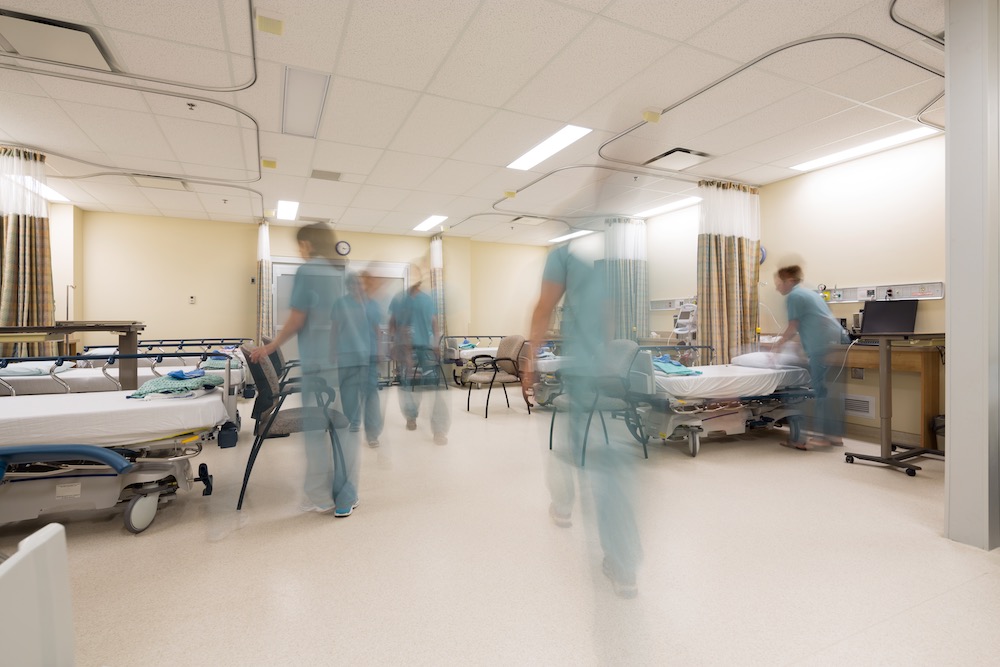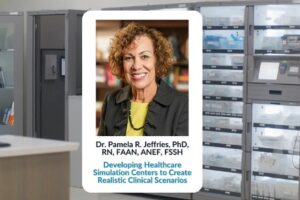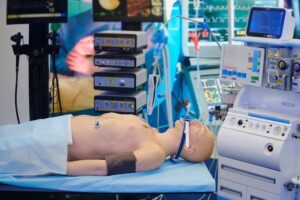New Clinical Simulation Center Updates | January 2022
Healthcare simulation centers are constantly being unveiled and upgraded across the United States and globally. As technology progresses, these clinical spaces are able to help transform how medical education and training are completed and have become integral to learners’ medical education within such clinical education buildings, medical centers, or training facilities devoted to healthcare simulation. Each new healthcare simulation center that opens provides even greater opportunities for learners to gain the skills and experience necessary to perform in the field and prioritize patient safety. This HealthySimulation.com article shares the most recent updates announced from various healthcare simulation centers around the world.
SU’s Henson Medical Simulation Center Celebrates a Decade of Success
According to Salisbury University, the institution recently celebrated the Richard A. Henson Medical Simulation Center’s previous decade of success with a reflection of accomplishments and technological advances of the past, present, and future. SU shared that a celebration event and open house, named “Simulation Center Then, Now and Tomorrow,” gathered local representatives, SU leadership, faculty, staff, learners, and friends of the center. The intent was to share remarks about the facility’s success, history, and warm wishes for decades to come. The event concluded with tours of the center to showcase demonstrations of some of the latest technological features and advances, SU shared.
Sponsored Content:
“I’m grateful for the incredible support that the simulation center has received over the years and enjoyed celebrating alongside the many donors and grantors who have been critical to the center’s success in enhancing healthcare education for countless students and providers,” said Dr. Kelly Fiala, dean of the College of Health and Human Services, according to the article.
Lee Health’s New Sim Lab to Build Nurse & CNA Skills
According to ABC7 SWFL, a new lab at Lee Health has opened for nurses and CNAs to enhance their skills. The simulation lab is an innovative training experience equipped with the sights and sounds of a room in the ICU, without being in the ICU. Instead, the learning experiences occur in the simulation lab at Gulf Coast Medical Center. The report shares that the lab has been designed to implement real-world scenarios like a patient going into cardiac arrest and that the lab can be used by anyone involved with patient care.
Next we will take a look at a new simulation center opening in Wisconsin:
Sponsored Content:
UWM’s Ziemer Clinical Simulation Center Opens
According to the University of Wisconsin System, the institution recently opened the James and Yvonne Ziemer Clinical Simulation Center. This is a state-of-the-art facility designed to train the next generation of healthcare professionals. The report shared that the 22,000-square-foot center at the Northwest Quadrant includes experiential learning spaces like a staged hospital, surgical, intensive care unit, and labor/delivery rooms, complete with sophisticated manikins that breathe, sweat, and give birth. Kim Litwack, the dean of the College of Nursing, emphasized that the need for transformation in healthcare is “no longer something we should do; it has become something we must do.”
NSCC to Expand Healthcare Simulation Labs with $1M State Grant
According to the Daily News of Newburyport, North Shore Community College has received a $1 million state grant that will allow the school to expand the Bertolon Simulation Health Care Center of Excellence at the college’s Danvers campus with technology and equipment to support a wide array of Allied Health and Human Services certificate and degree programs, as well as industry credential training. NSCC President William Heineman shared that the project will result in the premier simulation center on the North Shore and will “nourish the long-term health of the regional economy.”
New Fayetteville Tech Nursing Education and Simulation Center
According to WRAL news, a recent tour of the new Nursing Education and Simulation Center through Fayetteville Technical Community College showed a state-of-the-art facility packed with the latest technology. The center is designed to provide expanded hands-on training for more than 250 nursing learners who are needed all over the country, “but especially in this community.” The report shared that the state Nursing Board currently only allows FTCC to have a maximum of 280 students in the program. Yet, with the 32-bed, 10-room expansion, FTCC is applying to be allowed to train 400 nurses at a time.
Albany State Breaks Ground on Medical Simulation Center
According to the Albany Herald, Albany State University recently celebrated the coming nursing and health sciences simulation center. Rep. Gerald Greene shared that this opening will be important to the whole community and region, as the center is something “the delegation put on their priority list to get this done.”
More About Clinical Simulation Centers
Building a healthcare simulation center involves a huge amount of planning. All the stakeholders must come together and have input into the construction. The technical logistics and equipment are complex. For example, some healthcare simulation centers have simulation laboratories that exactly mimic an operating room, a delivery room, an emergency department, a medical-surgical floor room, an ICU room, etc. Experts from medical specialties and educators need to have input into the planning phase of the construction. Once the construction is complete, funds are needed for ongoing maintenance, repair, and replacement of equipment as the facility ages.
In many medical simulation training centers, the observation room serves as the debriefing room. In addition, there is usually a separate control room where the simulation technician sits. This is the person dubbed a Simulation Technology Specialist who remotely controls the manikin, such as the Laerdal SimMan3G, and who is responsible for setting up all the equipment and applying any special effects medical makeup called moulage.
In addition, a clinical educator will be present in the control room. The educator, who often speaks the voice of the manikin controls the physiological and spoken responses of the manikin usually in response to the interventions of the learners within the sim lab. The setup below would be typical for a small simulation center.
Imagine a large-scale healthcare simulation center with multiple sim labs, control rooms, and debriefing. Add in patient examination rooms with standardized patients, rooms full of task trainers, banks of computers, and conference facilities, and the simulation center could easily occupy thousands of square feet.
These medical simulation centers cost millions of dollars to build and operate and are primarily found in large medical centers and universities. Funding for simulation centers can come from donations, grants, and university/medical center funding. Some simulation centers generate funds by renting out their spaces to other institutions or offering courses for which they charge a fee.
Learn More About Clinical Simulation Centers
Lance Baily, BA, EMT-B, is the Founder & CEO of HealthySimulation.com, which he started while serving as the Director of the Nevada System of Higher Education’s Clinical Simulation Center of Las Vegas back in 2010. Lance is also the Founder and acting Advisor to the Board of SimGHOSTS.org, the world’s only non-profit organization dedicated to supporting professionals operating healthcare simulation technologies. His co-edited Book: “Comprehensive Healthcare Simulation: Operations, Technology, and Innovative Practice” is cited as a key source for professional certification in the industry. Lance’s background also includes serving as a Simulation Technology Specialist for the LA Community College District, EMS fire fighting, Hollywood movie production, rescue diving, and global travel. He and his wife Abigail Baily, PhD live in Las Vegas, Nevada with their two amazing daughters.
Sponsored Content:



















